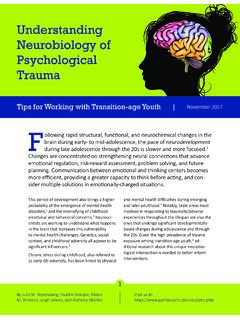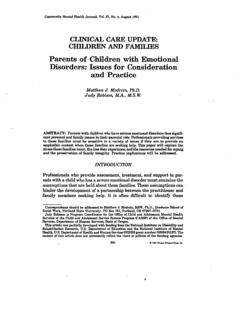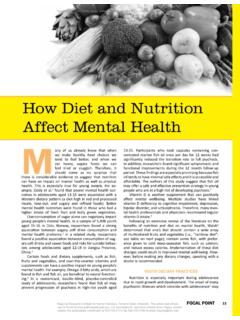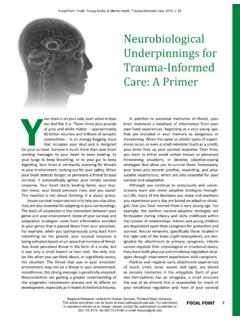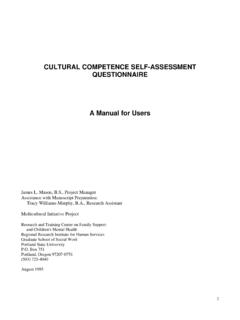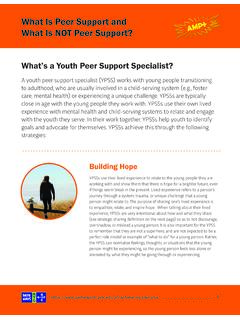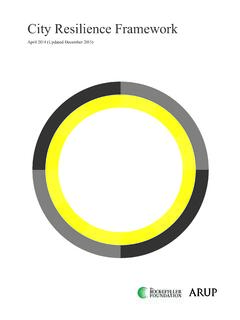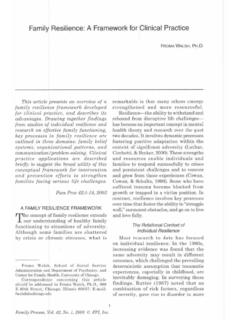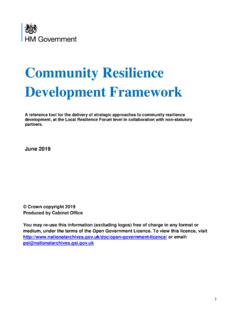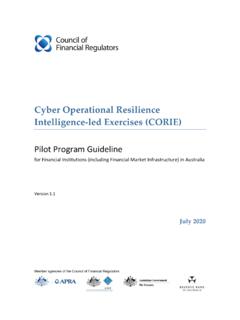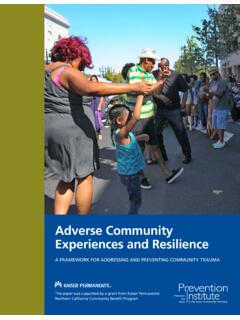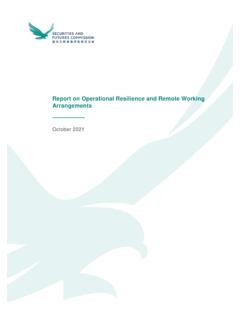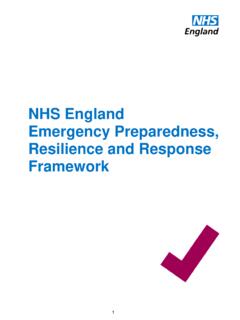Transcription of Resilience Theory as a Framework for Teaching Human ...
1 Resilience Theory as a Framework for Teaching Human Development within HBSE by Alaine Toomey, Eileen M. Brennan, and Barbara Friesen The social circumstances of substantial numbers ofchildren are declining in contemporary society. The developmental processes of these children, and ofthe adolescents and adults they become, are put at risk by circumstances ofpoverty, violence, discrimination, abuse and neglect, and parental mental illness or substance abuse (Institute of Medicine, 1989; U. S. Department of Health and Human Services, 1991). Theoreticians and researchers have recognized and responded to these challenges by examining Resilience in children who experience trauma or other circumstances that put them at risk yet emerge from their challenges with positive developmental outcomes (Garmezy, 1985; Rutter, 1987; Sameroff, 1993). The purpose of this paper is to propose a Framework for Teaching Human development within the Human Behavior in the Social Environment content which is grounded in the Theory and empirical work used to investigate Resilience .
2 The proposed Resilience Framework is an educational model which should assist students of social work and other Human services in their quest to understand the complexity ofgrowth and development in their clients over time. Unlike other models, the Resilience Framework emphasizes strengths over problems, and incorporates key contextual factors in its structure. It emphasizes transactions between the developing person and the social and physical environments, and therefore is highly compatible with the person-in environment Framework that guides the Teaching oftheory and practice in schools of social work. Defined as the "process of, capacity for, or outcome of successful adaptation despite challenging or threatening circumstances" (Masten, Best, & Garmezy, 1990, p. 426), the concept of Resilience provides a useful lens for viewing established theoretical frameworks and key developmental research, while orienting students to the strengths and potential for competence of the people they serve.
3 The model presented in this paper is based on an analysis of the Resilience literature, and is organized in relation to three key concepts: (1) Resilience as a process influenced by culture, individual attributes, and life changes; (2) the family as the context ofdevelopment; and (3) potential environmental supports for the development of Resilience housed in societal institutions, friendship networks, and the extended family. The Resilience Framework In order to fully discuss the Resilience Framework , a brief literature review will be used to illustrate the diversity of conceptualizations of Resilience , some basic conceptual definitions will be offered, and then the model itself will be considered. The term Resilience has been used to label three different types of phenomena: (a) individuals who have experienced traumatic events but have been able to recover well; (b) persons who belong to high-risk groups, but who have more favorable outcomes than expected; and ( c) persons who show positive adaptation despite life stressors (Masten, Best, & Garmezy, 1990).
4 Researchers have long been interested in the instances ofadaptive functioning in those children and adults who have been buffeted 'by historical adversities or other traumatic events, but nevertheless have had positive developmental outcomes. Historically-based studies have focused upon children who have grown to productive adulthood despite being survivors of the Holocaust (Epstein, 1979; Moskovitz, 1985), and who have developed well in spite ofbeing surrounded by Northern Ireland's political turmoil and frequent violence (Harbison, 1983). Facing a high level ofrisk, children ofparents with severe schizophrenia who flourished despite deplorable living conditions were at first judged to be "invulnerable", that is to be immune to the stressors that surrounded them (Anthony, 1975). With later reflection, and after other follow-up research, Anthony (1987) acknowledged that the concept ofinvulnerability had a somewhat mythical cast, offered the observation that the adaptation of the child must be viewed in the context of a particular threat and called for an examination of the Resilience children exhibit in their coping and development of competence in the face ofchallenges.
5 Perhaps the most productive examination ofresilience is found in the work of Garmezy and his co-workers, who have conducted research for over two decades at the University ofMinnesota on the positive adaptation of children under conditions of high risk or facing an accumulation of life stressors. Building on earlier studies of children at risk for developmental psychopathology (Garmezy, 1970, 1971), Project Competence studied both normative community samples and children under high risk (Masten, Morison, Pelligrini, & Tellegen, 1990) and examined the relationship between life stress exposure and demonstrated competence. Project Competence researchers found 3 evidence that certain correlates ofcompetence served as moderating protective factors for these children. They also observed that Resilience , like adaptation in general, is contextual, and is affected by the constellation of protective factors and risk factors that are present in the families, and wider society (including culture) which make up the environments ofindividuals finding themselves in challenging situations.
6 (Masten, Best, & Garmezy, 1991). Key Concepts Although Resilience is sometimes conceptualized in terms ofa profile ofdesirable personality and cognitive characteristics of stress-resistant persons, this definition fails to capture the dynamic phenomenon ofindividual adaptation which is necessarily process based. Instead, we propose to present a Framework which conceptualizes the phenomenon ofresilience as the process of, capacity for, and outcomes of successful adaptation in spite of adversities which threaten development ( Masten, 1994; Masten, Best, & Garmezy, 1990). Developmentalists characterize adversity in terms of stressful life events which can be expected to cause stress in many people, and can seriously disrupt normal functioning (Masten, 1994). The stress is often experienced psychologically as discomfort based on a lack ofcorrespondence between the demands ofa situation, and one's own resources to handle them. Stressful life events can be classified as normative events which are experienced by many at a predictable time ofone's life ( , entry into high school, joining the military service, birth of the first child), and non-normative events, which are either experienced by few, or which have a low probability of occurring 4 at a particular time in the life course (e.)
7 G., a diagnosis of multiple sclerosis, divorce in older adulthood, death of a child). Life stressors can also be examined by level of severity: traumas, ordinary stressors, and "daily hassles". Traumatic experiences pose the most severe challenges, and are adversities ofgreat magnitude, often with a sudden onset, such as a destructive earthquake, the experience ofbeing raped, or witnessing a murder. These event tax the resources of the most resourceful of persons, and may cause lasting disruptions in the lives of those who bring fewer biographical assets to the experience (Rahe, 198?). Ordinary stressors are life events which disrupt functioning in most people, such as change ofresidence, being in a non-injury car accident, or entering preschool. Finally, daily hassels can be considered as disruptive life events when they "pile up" and cause frustration and difficulty functioning (Watson & Pennebaker, 1989). Adaptation to the stress caused by life events is affected by risk factors which are associated with elevated probabilities of undesirable outcomes for a specific group.
8 Risk factors include such adversities as poverty, low maternal education, low socioeconomic status, low birth weight, family instability, mental illness in the primary caregiver, and parental substance abuse (Chicchetti & Garmezy, 1993). The risks can be proximal and impinge directly on the person, such as inadequate nutrition or a caregiver's alcoholism, or they can be distal, and be felt only as they affect the person through other pathways, such as social class distinctions, or racial discrimination. Masten (1994) cautions that by their very nature, risk variables reflect unknown causes ofproblems; if a person performs well despite the presence of a risk factor, we may not be able to infer that he or she is resilient in all cases, since it is not known how the factor directly or indirectly challenges 5 the adaptive processes. Correspondingly, there have been correlates ofpositive outcomes in the presence of stressors, which have been identified as protective factors that appear to buffer psychological distress (Masten, Best, & Garmezy, 1990).
9 Rutter (1987) states that protective processes produce turning points in people's lives, in which the trajectories of their development change in a positive direction. Protective factors that have been identified empirically are many in number, and can be organized into three major categories (Benard, 1991): protective factors within the individual; protective factors within the family; and protective factors in the wider environment (eg. school, community, ethnic group). Recovery from stressful life events, produced through the "self-righting" processes labeled resiliency has been characterized using a variety of terms: attaining a positive developmental trajectory (Bowlby, 199?; Rutter, 1987), successful performance oflife tasks (reference needed, date), and positive mental health (Felsman & Vaillant, 1987). Individual researchers look for such outcomes as academic success, flourishing careers, mature defenses, lack of sociopathy, absence ofmental illness, and positive parenting practices for outcomes.
10 We have chosen to focus upon the successful performance of life tasks as indicators of a positive adaptation to stress, this conceptual base has clear developmental connections. A Resilience Framework for Human Development Theory 6 The proposed Framework for Human development Theory follows from the current trend in clinical research to study health instead ofillness, competence instead of maladjustment, and health promotion and prevention, instead oftreatment of disorders (Fisher, Kokes, Cole, Perkins, & Wynne, 1987). The Framework begins by proposing that each individual brings to developmental processes a set of biographical assets, which include the personal, familial, and other environmental protective factors which have served them well in the past. On the other hand, individual development is also influenced by past risk factors, that is belonging to a group with a higher likelihood ofencountering adversity, having been part of a family which itself carries elements of risk, or coming out ofa harsh and difficult environment.
